Once upon a time in the not-so-distant past, telephone poles began sprouting up like mushrooms across the landscape. These tall, slender structures have become an integral part of our communication infrastructure, and they show no signs of going away anytime soon.
So, what’s the big deal about telephone pole height?
In this blog post, we’ll dive into the nitty-gritty of what makes these wooden giants so fascinating.
Grab a cup of coffee, sit back, and let’s chat about the average telephone pole height and everything that goes into making them the unsung heroes of our modern world.

How Tall In Feet Is The Average Telephone Pole?
First, let’s cut to the chase: what is the typical height of a telephone pole? Well, it’s a bit like asking the average height of humans—there’s a range.
In general, telephone poles stand between 30 and 60 feet tall, with 40 feet being quite common. But, as with most things in life, there’s more to the story than just the numbers.
Now, you might be wondering what factors contribute to this range of heights. It’s not like someone just wakes up one day and decides, “Hmm, I think I’ll make this pole 50 feet tall.” No, there’s actually quite a bit of thought that goes into determining the height of a typical utility pole.
Factors like materials, pole type, pole class, regulations, and environmental considerations all play a part. So, let’s delve into those, shall we?
Determining the standard height of a power pole is like solving a complex equation. One must consider the various factors that we mentioned earlier and weigh their importance in relation to one another.
It’s part science, part art, and part gut feeling. But, in the end, it all comes down to finding that sweet spot that balances function, safety, aesthetics, and cost.
Key takeaways:
- The average telephone pole height ranges from 30 to 60 feet, with 40 feet being quite common.
- Factors such as materials, pole type, regulations, and environmental considerations all influence pole height.
- Balancing functional requirements with safety, cost, aesthetics, and community concerns is essential.
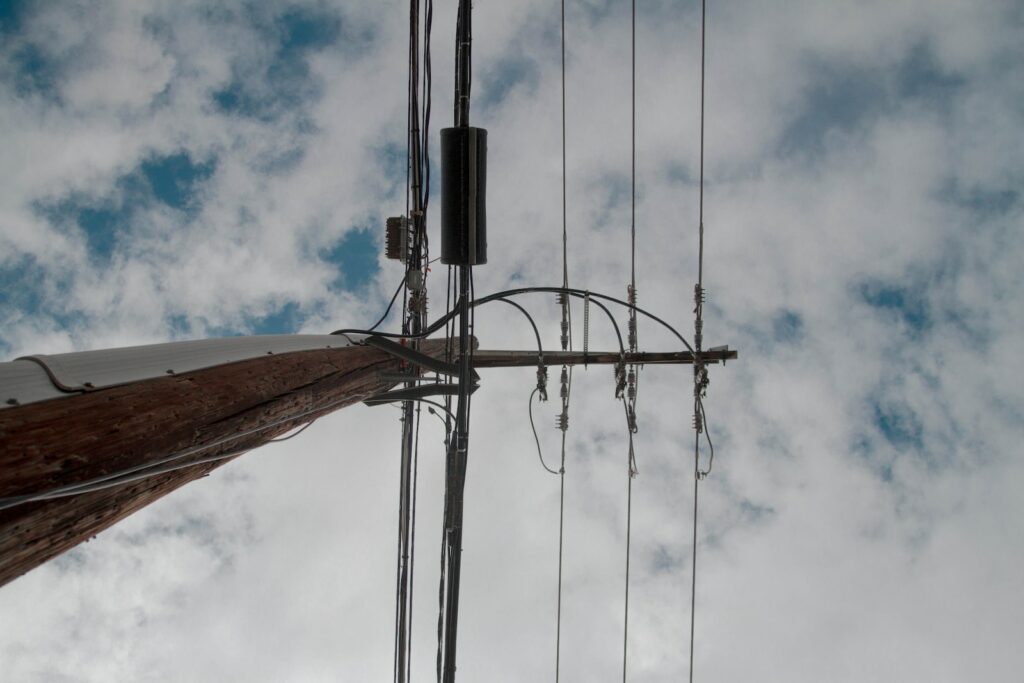
Materials Used in Utility Pole Construction
Wood (commonly used types and their characteristics)
You might have noticed that a lot of telephone poles are made of wood. But, did you know that not just any wood will do?
That’s right, there are specific types of wood that are particularly well-suited for the purpose of a wood pole . Here are a few of the most common choices:
- Southern yellow pine: This wood is strong, durable, and resistant to decay. It’s like the Hulk of the wood world, minus the green skin and anger management issues.
- Douglas fir: Another popular choice, Douglas fir offers a combination of strength and resistance to decay that makes it a great option for telephone poles.
- Western red cedar: This wood is naturally resistant to decay, insects, and moisture, making it an ideal choice for poles in wet, coastal environments.
| Wood Type | Strength | Decay Resistance | Ideal Environment |
| Southern Yellow Pine | High | High | Various |
| Douglas Fir | High | High | Various |
| Western Red Cedar | Medium | High | Wet, coastal |
Steel Utility Poles
But, wood isn’t the only game in town. Steel poles are also used in some situations, especially when strength and durability are of utmost importance.
While steel poles can be a bit more expensive than their wooden counterparts, they offer some significant advantages, like longer service life and resistance to damage from insects and woodpeckers.
Concrete Utility Poles
A Concrete pole? You bet! While they may not be as common as wood or steel poles, they do have their place in the world of telephone poles.
Concrete poles are incredibly strong, durable, and resistant to environmental factors. However, they can be more expensive and heavier than wood or steel poles, which can make installation and maintenance a bit more challenging.
Composite Materials Utility Poles
In our ever-evolving world, new materials are always being developed, and telephone poles are no exception.
Composite poles, made from materials like fiberglass and resin, are becoming more popular due to their strength, durability, and resistance to decay. Plus, they’re lighter than concrete poles, making them easier to transport and install.
How Material Choice Affects Utility Pole Height
So, how does the choice of material impact the height of a telephone pole? Well, certain materials, like steel and concrete, can support taller utility poles due to their inherent strength.
On the other hand, wood and composite poles may be more limited in height due to their structural capabilities.
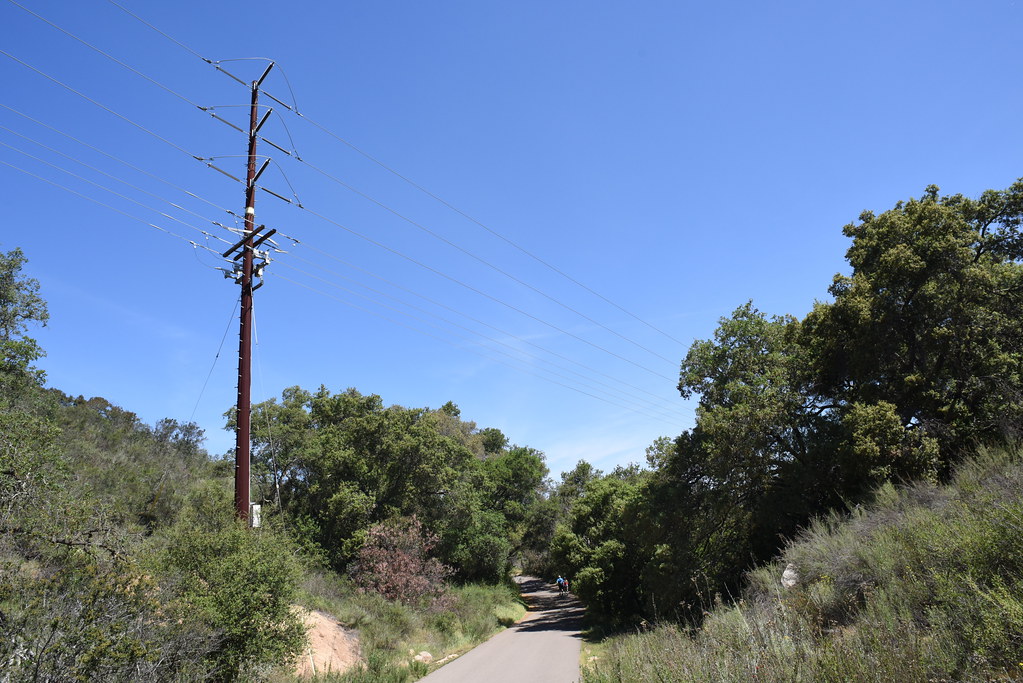
Types of Telephone Poles
Distribution poles
Not all telephone poles are created equal! Distribution utility poles are the ones you’ll see most often in residential and urban areas.
They carry lower-voltage power lines and telecommunication cables, typically standing between 30 and 40 feet tall.
These poles are like the friendly neighborhood Spider-Man of the telephone pole world, keeping things running smoothly in our local communities.
Transmission poles
Now, let’s talk about the big guns: transmission poles. These bad boys are used to carry high-voltage power lines over long distances, and they can stand anywhere from 60 to 120 feet tall.
They’re like the Iron Man of telephone poles—strong, powerful, and able to handle the big jobs.
Joint-use poles
Sometimes, telephone poles need to share the load with other utilities, like cable or fiber optic lines. These poles, called joint-use poles, are designed to accommodate multiple utility lines, and their height can vary depending on the specific requirements of each utility.
Think of these utility poles as the Avengers of the utility world, working together for the greater good.
Height differences between types
As you can see, there are distinct differences in height between the various types of telephone poles.
Distribution poles tend to be on the shorter end of the spectrum, while transmission poles can reach great heights. Joint-use poles, on the other hand, can vary greatly in height depending on their specific utility requirements.
Factors determining the appropriate pole type
Choosing the right type of telephone pole for a particular application is a bit like choosing the right superhero for a mission.
Factors like the voltage of the power lines, the distance the telephone lines need to travel, the types of utilities being carried, and the surrounding environment all play a role in determining which pole type is best suited for the job.

Height Regulations and Standards
When it comes to telephone poles, safety is paramount. That’s where the National Electrical Safety Code (NESC) comes in.
This code sets standards and requirements for the safe installation, operation, and maintenance of electrical supply and communication lines and equipment, including specifications for minimum pole heights.
The FCC also has a say in the world of telephone poles. They regulate the placement and height of poles used for communication purposes, like carrying phone and internet lines.
These regulations help ensure that our communication infrastructure remains safe and efficient.
In addition to national regulations, there are international standards that govern the height of telephone poles. These standards vary by country, but they generally provide guidelines and best practices for the design, installation, and maintenance of utility poles.
Industry-specific guidelines
On top of all these regulations and standards, there are industry-specific guidelines that can influence the height of telephone poles.
For example, electric utilities may have their own internal guidelines for pole heights based on factors like voltage, distance between utility poles, and the need for clearance from trees and other obstructions.
Impact of regulations on average pole height
So, with all these rules and guidelines in place, how do they impact the average height of telephone poles? In general, these regulations help ensure that poles are tall enough to meet safety and operational requirements while balancing concerns like cost and aesthetics.
This means that the average height of telephone poles tends to fall within a relatively narrow range, as determined by the collective wisdom of regulators and industry experts.
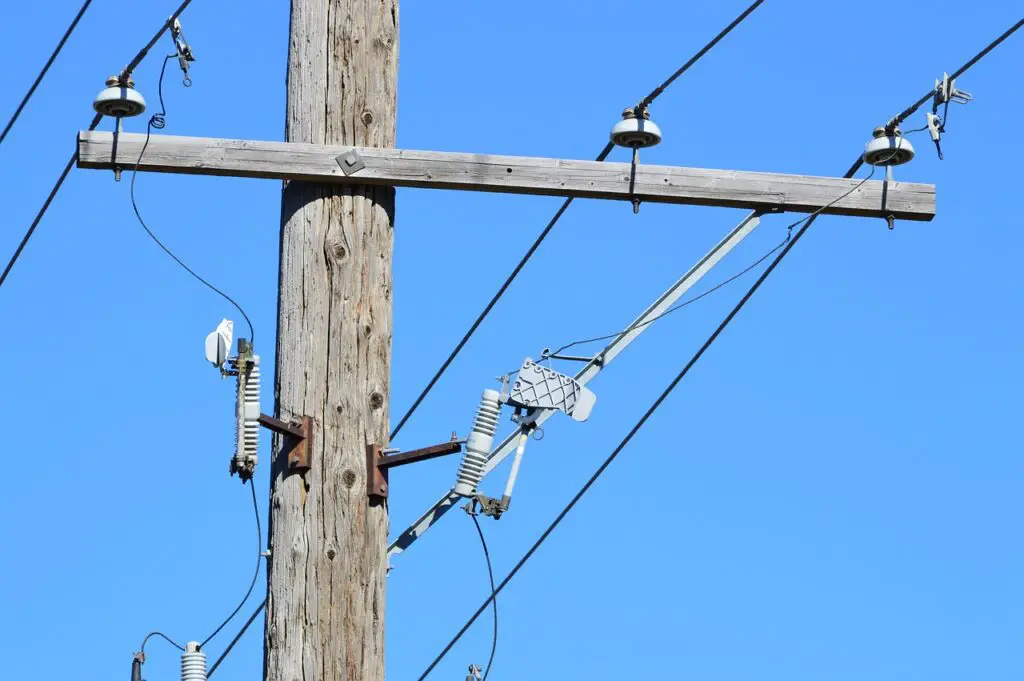
Environmental Factors Influencing Pole Height
Terrain and topography
Mother Nature plays a significant role in determining the height of telephone poles. The terrain and topography of the land can dictate the need for taller or shorter poles.
For example, hilly or mountainous areas may require taller poles to maintain proper line clearance, while flat, open areas may allow for shorter utility poles.
Soil and foundation conditions
The soil conditions and the type of foundation used for the pole also impact its height. In areas with unstable or soft soil, taller poles may be necessary to provide additional stability and resist the forces of wind and weather.
Wind and weather considerations
Speaking of wind and weather, these factors can also influence the height of telephone poles.
Areas prone to high winds, heavy snow, or ice may require taller poles to withstand these forces and maintain the proper line clearance.
Vegetation clearance requirements
Keeping utility lines clear of trees and other vegetation is essential for safety and reliability.
In areas with dense tree cover or rapid vegetation growth, taller poles may be necessary to maintain adequate clearance and prevent contact between utility lines and nearby trees.
How these factors affect height selection
As you can see, environmental factors play a critical role in determining the appropriate height for a telephone pole.
By considering these factors in conjunction with regulations, industry guidelines, and the specific needs of each utility, the optimal height for each utility pole can be determined.
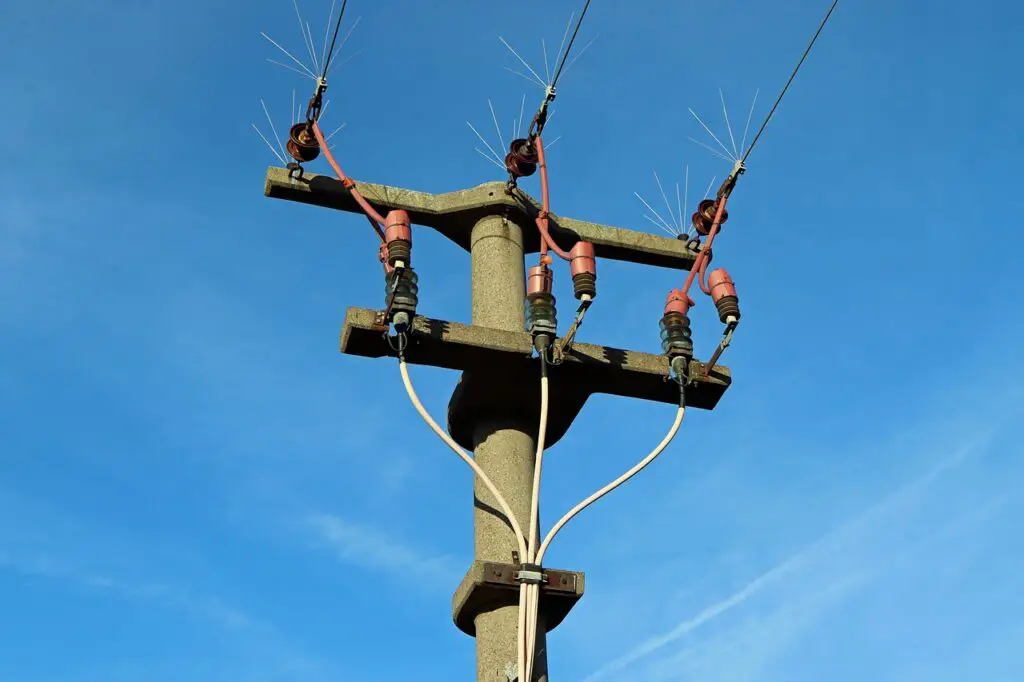
Line Voltage and Height Correlation
Utility lines come in a variety of voltages, which are typically classified as low, medium, or high. The voltage of a line can impact the height of the poles used to support it, as higher voltages generally require greater clearance from the ground and other objects.
As the voltage of a line increases, so does the required height of the poles used to support it.
This is because higher voltages pose a greater risk of electrical arcing and other safety hazards, necessitating additional clearance to protect people, property, and the environment.
Safety is always a top priority when it comes to utility infrastructure, and line voltage plays a significant role in determining what precautions must be taken.
Higher voltage lines pose a greater risk to public safety, which is why taller poles are often used to provide adequate clearance and reduce the risk of accidents and electrical hazards.
Different voltage levels have specific clearance requirements, which can impact the height of the poles used to support them.
These clearance requirements are typically established by regulatory agencies and industry standards, ensuring that utility infrastructure remains safe and reliable.
In summary, line voltage is an essential factor in determining the average height of telephone poles. Higher voltage lines typically require taller poles to meet safety and clearance requirements, while lower voltage lines can often be supported by shorter poles.
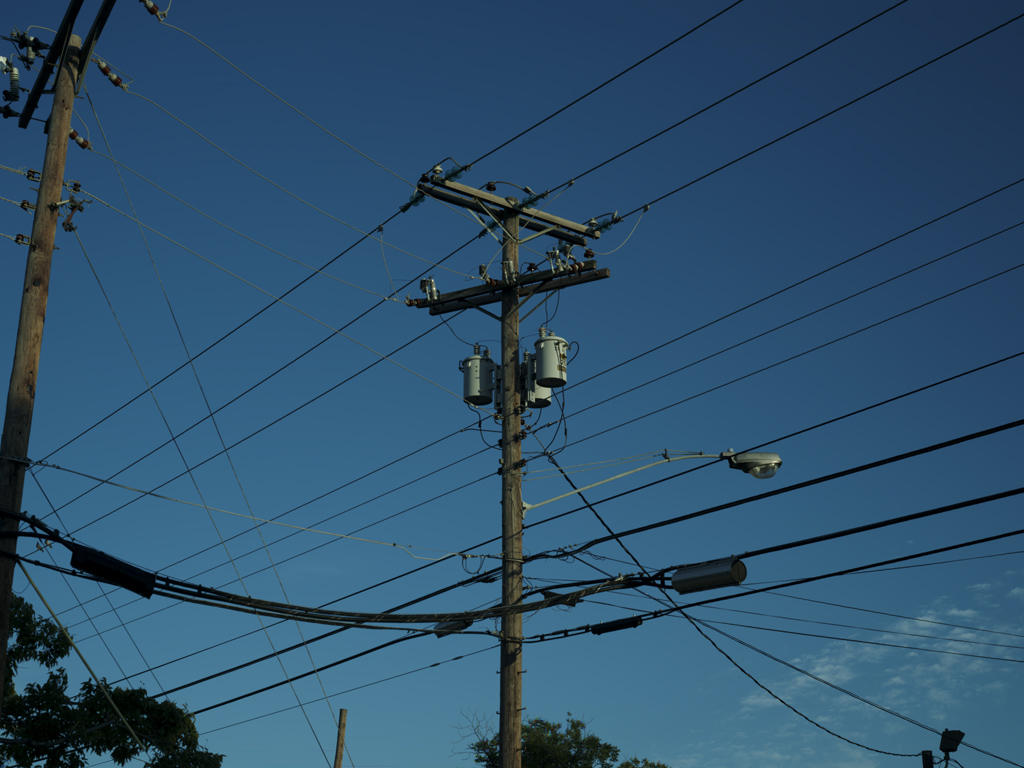
Effects of Pole Height on Utility and Communication Services
Signal strength and coverage
The height of a telephone pole can impact the quality and coverage of utility and communication services.
For example, taller poles can provide better signal strength and coverage for wireless communication networks, ensuring that users enjoy a seamless connection.
- Better signal strength for mobile networks
- Wider coverage area for wireless services
- Improved reliability for telecommunication services
Line sag and tension
Pole height also affects the sag and tension of utility lines. A taller utility pole can reduce line sag and maintain the proper tension, which helps ensure the safe and efficient operation of utility infrastructure.
- Reduced line sag for safer, more efficient operation
- Proper tension maintained for longer service life
- Lower risk of contact with trees and other obstructions
Maintenance and inspection considerations
When it comes to maintaining and inspecting utility infrastructure, pole height plays a critical role.
Taller poles can be more challenging and time-consuming to maintain, while shorter poles may be more accessible and easier to inspect.
- Shorter poles: Easier access for maintenance and inspection
- Taller poles: Increased maintenance complexity and inspection challenges
- Importance of balancing pole height with maintenance and inspection requirements
Impacts on system reliability and resilience
The height of telephone poles can impact the overall reliability and resilience of utility and communication systems.
Taller poles can help protect infrastructure from damage due to weather events, while shorter poles may be more susceptible to damage.
- Taller poles: Increased system resilience and reliability
- Shorter poles: Potential increased risk of weather-related damage
- Importance of considering pole height in system design and planning
Balancing service requirements and height constraints
Ultimately, the goal is to strike a balance between the service requirements of utility and communication systems and the constraints imposed by pole height.
This requires considering factors like safety, cost, aesthetics, and environmental considerations in addition to the functional needs of the infrastructure.
- Balancing safety, cost, aesthetics, and environmental concerns
- Considering the specific needs of each utility and communication system
- Striving for optimal pole height that meets all requirements and constraints

Aesthetic and Community Considerations
Telephone poles are often a prominent feature in landscapes and neighborhoods, so their height can have a significant impact on the overall aesthetic of an area.
Taller poles may be more visually obtrusive, while shorter poles may blend more seamlessly into the environment.
- Taller poles: Potential increased visual impact
- Shorter poles: More subtle presence in the environment
- Importance of considering aesthetic concerns in pole height selection
Public perception and acceptance
Public perception and acceptance of telephone poles can also be influenced by their height.
Taller poles may be seen as an eyesore or a disruption to the local landscape, while shorter poles may be more readily accepted by the community.
- Taller poles: Potential negative public perception
- Shorter poles: Greater likelihood of community acceptance
- Balancing public perception and the functional requirements of poles
Alternatives to traditional telephone poles
In some cases, alternatives to traditional telephone poles may be considered to address aesthetic and community concerns.
For example, underground utility lines or camouflaged poles designed to blend in with the environment may be used to minimize visual impact and improve public acceptance.
- Underground utility lines: Reduced visual impact
- Camouflaged poles: Blend in with the environment
- Considering alternative solutions to address aesthetic and community concerns
Collaborative planning with communities
Working collaboratively with communities in the planning and design of utility infrastructure can help ensure that pole height and other factors are considered in a way that balances functional needs with community preferences and concerns.
- Engaging community stakeholders in the planning process
- Encouraging open dialogue and feedback on proposed infrastructure designs
- Striving for solutions that balance community concerns with functional requirements
Conclusion: The Importance of Finding the Right Balance
In conclusion, determining the average height of a telephone pole is no simple task. It requires considering a multitude of factors, from materials and pole type to regulations, environmental considerations, and community concerns.
By finding the right balance between these factors, utility companies can ensure that their infrastructure is safe, reliable, and efficient while minimizing negative impacts on the environment and local communities.
| Factor | Importance | Example Impact on Pole Height |
| Material | Different materials offer varying levels of strength, durability, and cost. | Steel poles may support taller heights. |
| Pole Type | Distribution, transmission, and joint-use poles have different height ranges. | Transmission poles are taller. |
| Regulations | National and international standards dictate minimum height requirements. | Higher voltage lines require taller poles. |
| Environment | Terrain, soil, and weather conditions can affect pole height selection. | Mountainous areas may require taller poles. |
| Community | Aesthetic and public perception considerations can impact pole height. | Shorter poles may be preferred for visual impact. |
So, the next time you pass by a telephone pole, take a moment to appreciate the thought and planning that went into determining its height.
And remember, like so many things in life, it’s all about finding the right balance.
- Is A Telephone Pole Anchored Into The Ground? - April 8, 2024
- Average Telephone Pole Diameter (Circumference Of Utility Poles) - April 8, 2024
- Are Telephone Poles Dangerous? (Utility Pole Safety) - April 8, 2024



Leave a Reply